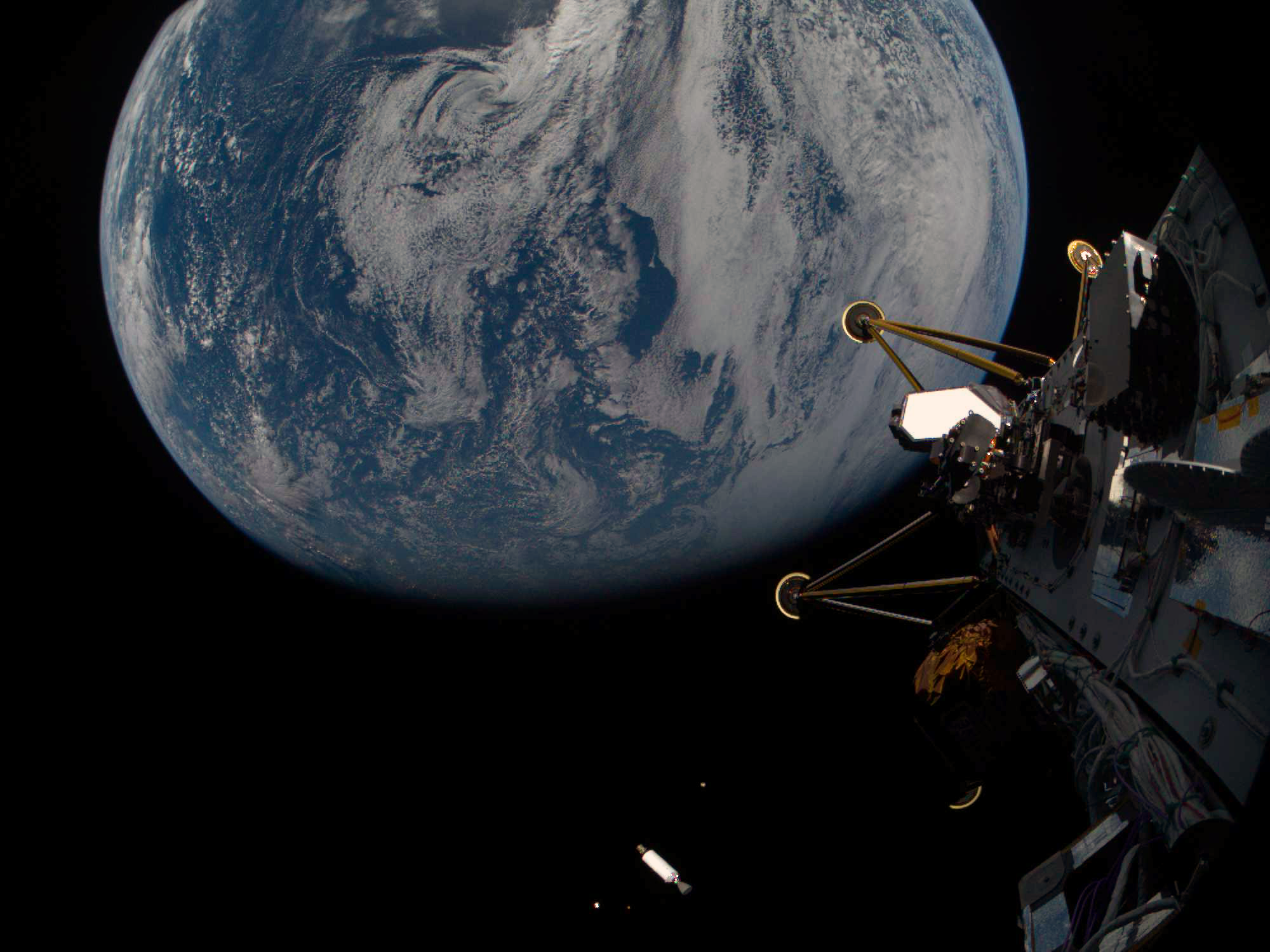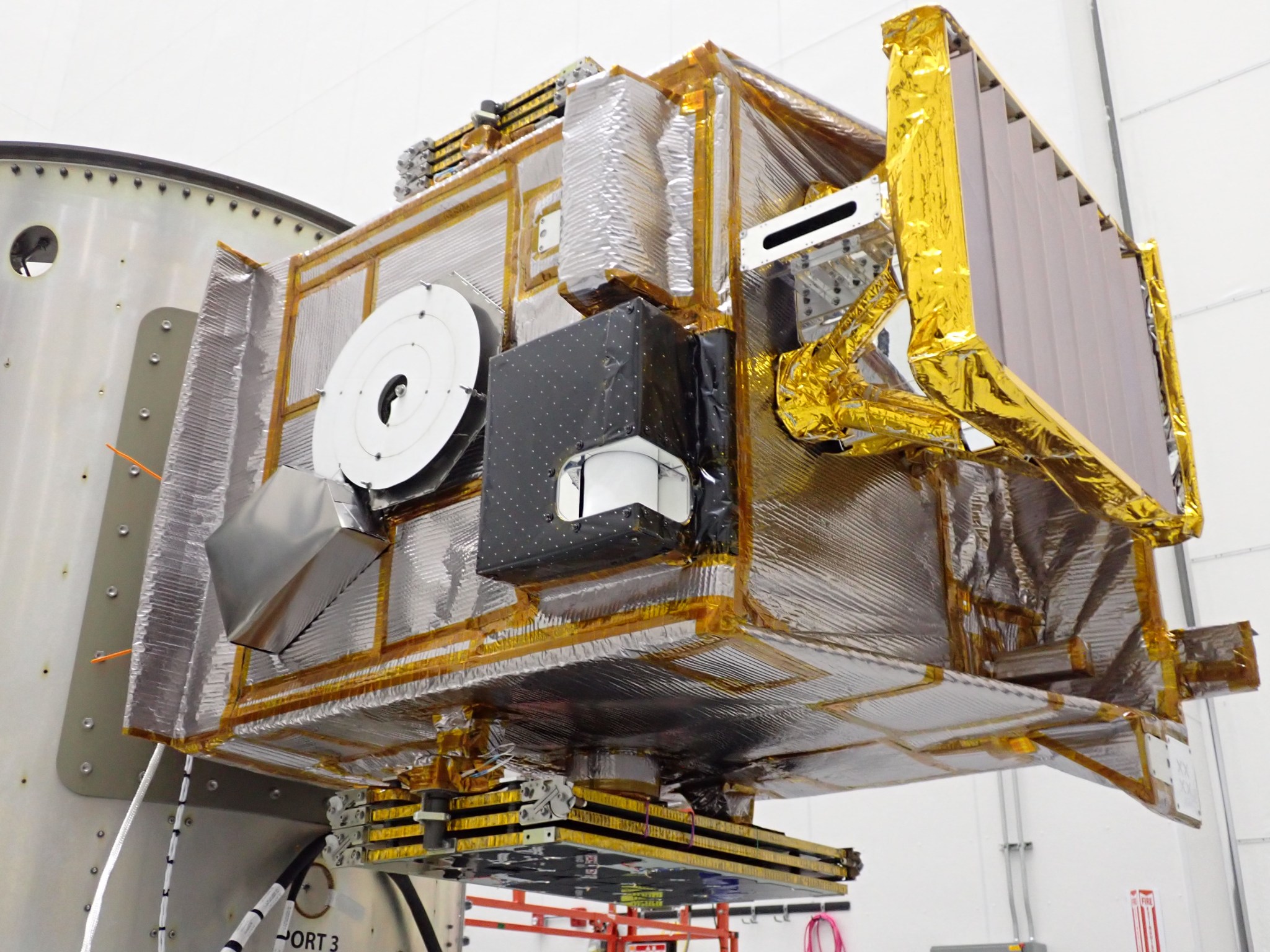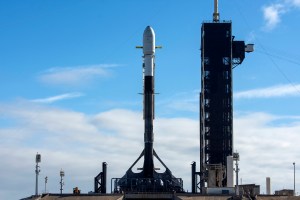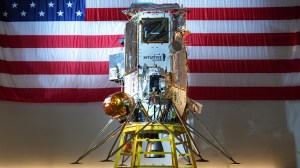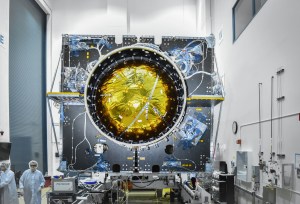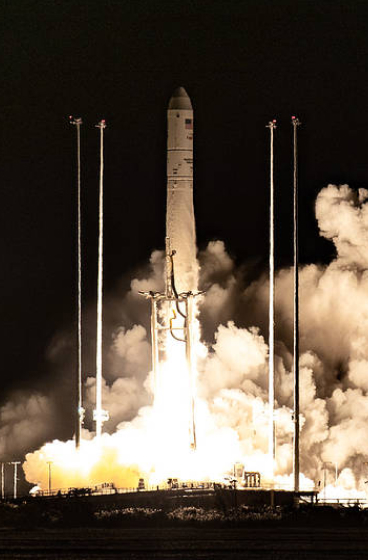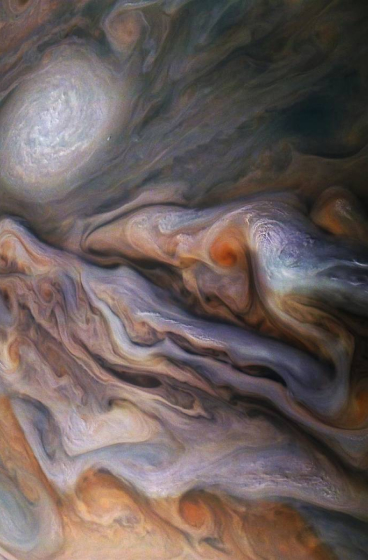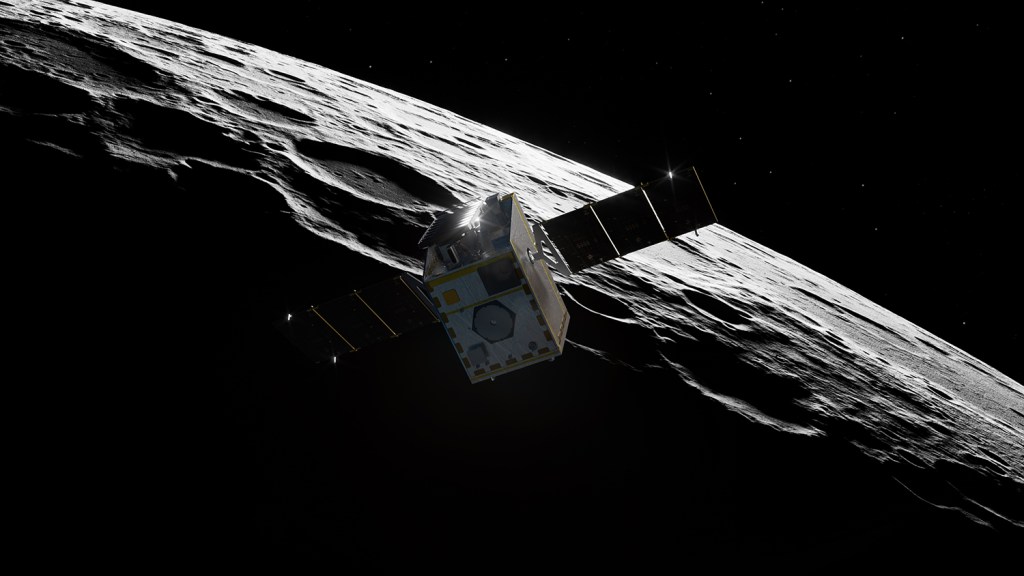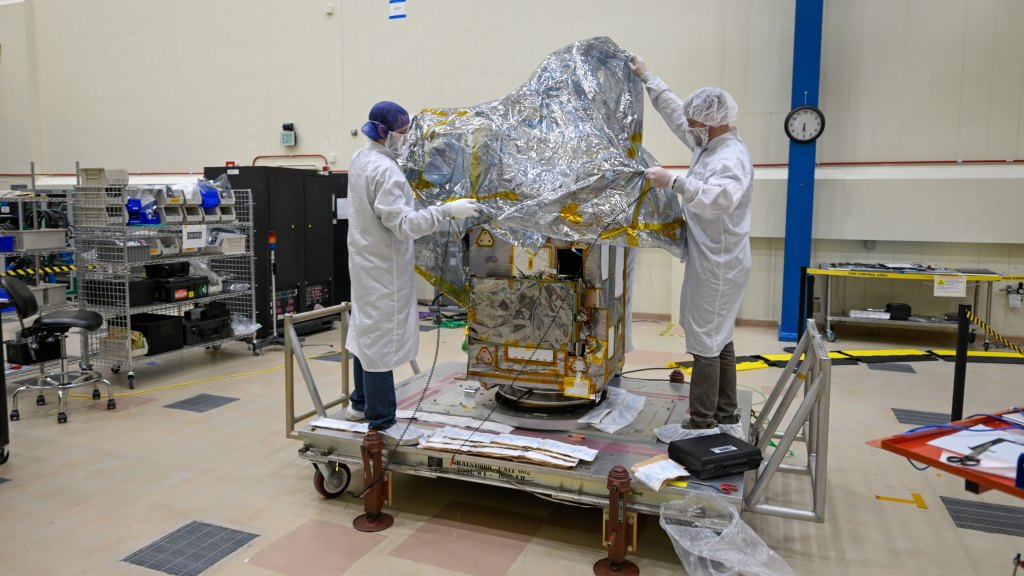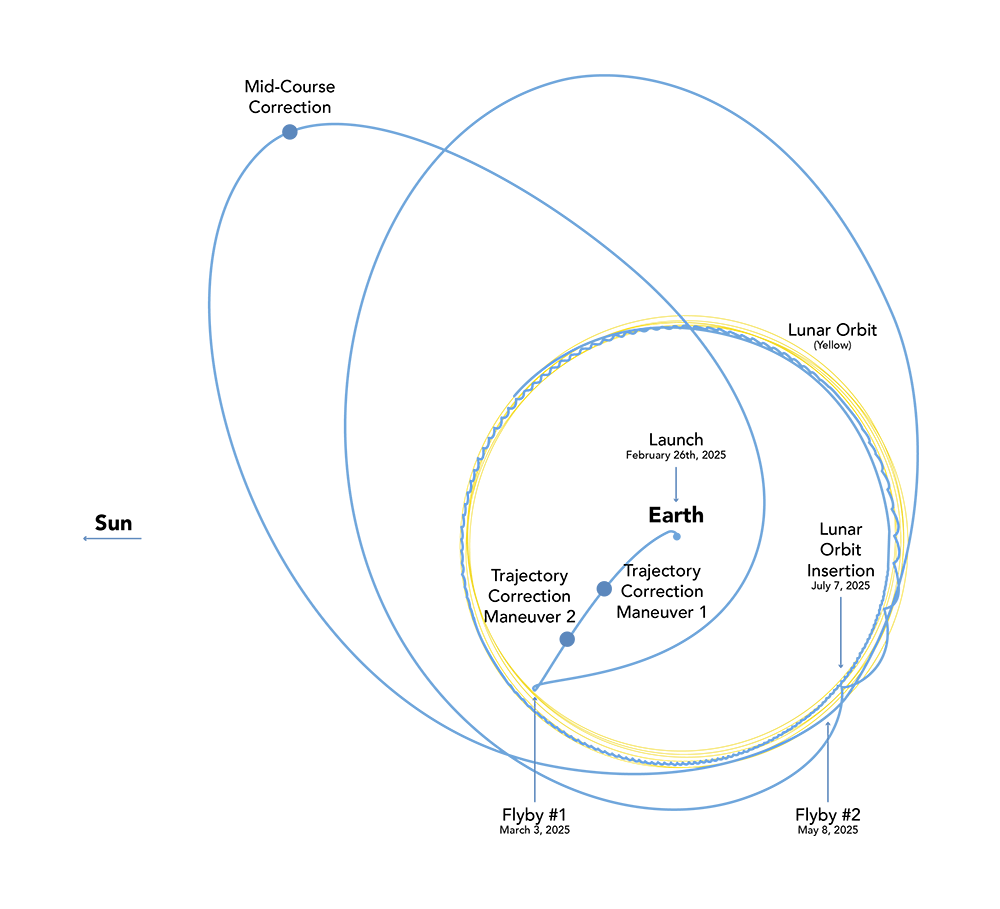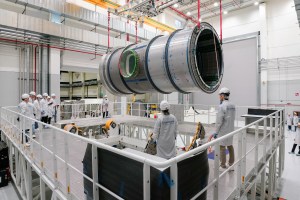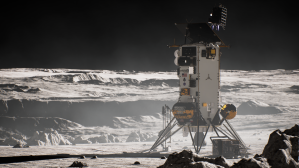Liftoff! NASA Tech, Science En Route to Moon with Intuitive Machines

Creating a golden streak in the night sky, a SpaceX Falcon 9 rocket carrying Intuitive Machines’ Nova-C lunar lander (IM-2) and NASA’s Lunar Trailblazer soars upward after liftoff from Launch Complex 39A at NASA’s Kennedy Space Center in Florida at 7:16 p.m. EST, Wednesday, Feb. 26. The IM-2 launch, which is part of NASA’s CLPS (Commercial Lunar Payload Services) initiative, is carrying NASA technology and science demonstrations, and other commercial payloads to Mons Mouton, a lunar plateau to advance our understanding of the Moon and planetary processes, while paving the way for future crewed missions. (Credit: NASA)
The next set of NASA science and technology demonstrations is on its way to the lunar surface, where they will gather data about Earth’s nearest neighbor and help pave the way for American astronauts to explore the Moon and beyond, for the benefit of all.
Carrying NASA instruments as part of the agency’s CLPS (Commercial Lunar Payload Services) initiative and Artemis campaign, Intuitive Machines’ IM-2 mission launched at 7:16 p.m. EST, Feb. 26, aboard a SpaceX Falcon 9 rocket from Launch Complex 39A at the agency’s Kennedy Space Center in Florida. Intuitive Machines’ lunar lander is scheduled to touch down on Thursday, March 6, in Mons Mouton, a plateau in the Moon’s South Pole.
“With each CLPS mission, the United States is leading the way in expanding our reach and refining our capabilities, turning what was once dreams into reality,” said NASA acting Administrator Janet Petro. “These science and technology demonstrations are more than payloads – they represent the foundation for future explorers who will live and work on the Moon. By partnering with American industry, we are driving innovation, strengthening our leadership in space, and preparing for sending humans farther into the solar system, including Mars.”
Once on the Moon, the NASA CLPS investigations will aim to measure the potential presence of volatiles or gases from lunar soil – one of the first on-site demonstrations of resource use on the Moon. In addition, a passive Laser Retroreflector Array on the top deck of the lander will bounce laser light back at any future orbiting or incoming spacecraft to give them a permanent reference point on the lunar surface. Other technology instruments on this delivery will demonstrate a robust surface communications system and deploy a propulsive drone designed to hop across the lunar surface.
NASA’s Lunar Trailblazer spacecraft, which launched as a rideshare with the IM-2 mission, also began its journey to lunar orbit, where it will map the distribution of the different forms of water on the Moon. Lunar Trailblazer will discover where the Moon’s water is, what form it is in, and how it changes over time. Observations gathered during its two-year prime mission will contribute to the understanding of water cycles on airless bodies throughout the solar system while also supporting future human and robotic missions to the Moon by identifying where water is located.
NASA’s Artemis campaign includes conducting more science to better understand planetary processes and evolution, to search for evidence of water and other resources, and support long-term, sustainable human exploration.
The NASA science and technology instruments that launched aboard the IM-2 mission are:
- Polar Resources Ice Mining Experiment-1 (PRIME-1): This experiment will explore the Moon’s subsurface and analyze where lunar resources may reside. The experiment’s two key instruments will demonstrate the ability to extract and analyze lunar soil to detect volatile chemical compounds that turn into gas. The two instruments will work in tandem: The Regolith and Ice Drill for Exploring New Terrains will drill into the Moon’s surface to collect samples, while the Mass Spectrometer Observing Lunar Operations will analyze these samples to determine the gas composition released across the sampling depth. The PRIME-1 technology will provide valuable data to better understand the Moon’s surface and how to work with and on it.
- Laser Retroreflector Array (LRA): This collection of eight retroreflectors will enable precision laser ranging, which is a measurement of the distance between the orbiting or landing spacecraft to the reflector on the lander. The LRA is a passive optical instrument and will function as a permanent location marker on the Moon for decades to come.
- Micro Nova Hopper: Funded by NASA’s Space Technology Mission Directorate Tipping Point initiative, Intuitive Machines’ Micro Nova hopper, Grace, is designed to enable high-resolution surveying of the lunar surface under its flight path. This autonomous propulsive drone aims to deploy to the surface and hop into a nearby crater to survey the lunar surface and send science data back to the lander. It’s designed to hop in and out of a permanently shadowed region, providing a first look into undiscovered regions that may provide critical information to sustain a human presence on the Moon.
- Nokia Lunar Surface Communications System (LSCS): Also developed with funding from NASA’s Tipping Point initiative, Nokia’s LSCS 4G/LTE communications system will demonstrate cellular communications between the Intuitive Machines lander, a Lunar Outpost rover, and the Micro Nova hopper. Engineered to transmit high-definition video, command-and-control messages, and sensor and telemetry data, the LSCS aims to demonstrate an ultra-compact advanced communication solution for future infrastructure on the Moon and beyond.
Learn more about NASA’s CLPS initiative at:
-end-
Karen Fox / Jasmine Hopkins
Headquarters, Washington
202-358-1600 / 321-432-4624
karen.c.fox@nasa.gov / jasmine.s.hopkins@nasa.gov
Natalia Riusech / Nilufar Ramji
Johnson Space Center, Houston
281-483-5111
nataila.s.riusech@nasa.gov / nilufar.ramji@nasa.gov
Antonia Jaramillo
Kennedy Space Center, Florida
321-501-8425
antonia.jaramillobotero@nasa.gov
